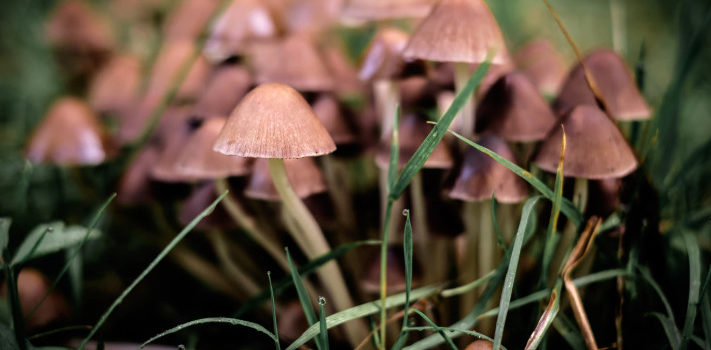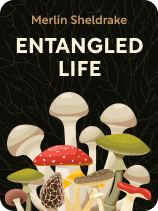

This article is an excerpt from the Shortform book guide to "Entangled Life" by Merlin Sheldrake. Shortform has the world's best summaries and analyses of books you should be reading.
Like this article? Sign up for a free trial here.
How does a fungus reproduce? What are the three steps of fungal reproduction?
All life forms reproduce by replicating their DNA and passing it to the next generation. This includes fungi, which is the main topic of Merlin Sheldrake’s book Entangled Life.
Below we’ll outline the multicellular fungi’s typical process for reproduction, including what we know and what we’ve yet to learn.
The Steps of Fungal Reproduction
How does a fungus reproduce? Surprisingly, the process is very similar to that of humans and other animals. Here are the three steps of fungal reproduction:
Step 1: Attraction. According to Sheldrake, fungi release sex pheromones (a chemical signal) to attract mates. (Shortform note: According to other researchers, fungal sex pheromones don’t only attract mates. These sex pheromones can also induce the creation of fungal sex organs—specialized hyphae that produce gametes (the equivalent of sperm and eggs).)
Step 2: Sex. After attraction, two fungi start having sex when a hypha from one mycelium fuses with the hypha of another. Their genetic material meets and combines in this fused channel. (Shortform note: We usually think of sex as something that happens between genetically different individuals. For a long time, scientists thought this was the only way organisms produced offspring with new genetic material. However, researchers recently discovered that this isn’t the only way of producing new genetic material: Some fungi clone themselves, have sex with their clones, and still manage to create new genetic material for their offspring.)
Step 3: Spore dispersal. After sex, one of the fungi grows flesh that develops into spores—cells containing the new genetic material. Then, this fungus disperses those spores. Although not all fungi use mushrooms for this step, Sheldrake focuses on describing several of the ways mushrooms spread spores:
- Explosive ejection: Some mushrooms eject spores into the air at high speeds. (Shortform note: Many of these mushrooms are able to achieve high speeds because they use fluid-filled tubes that shoot out spores, like a water gun.)
- Animal consumption: When animals eat mushrooms, they deposit the spores within their feces in a new location. (Shortform note: Conservation biologists sometimes measure spore levels in animal feces to predict the distribution of hard-to-find fungi.)
- Invasion: Some fungi invade organisms’ bodies. For example, Ophiocordyceps—the “zombie ant fungus”—infects an ant, manipulates its behavior so it crawls to an elevated location, then bursts from the ant’s head, showering its spores onto the forest floor.
(Shortform note: The popular genre of “fungal horror” often features plotlines that dramatize this last type of spore dispersal. In Jeff VanderMeer’s 2014 horror novel Annihilation, which inspired a movie with the same name, a fungus-like organism emits spores that invade characters’ bodies and alter their behavior. In Ling Ma’s 2018 dystopian novel Severance, a fungus reduces its victims to zombie-like shadows of their former selves. The 2023 TV show The Last of Us, based on a video game with the same name, explores similar themes: In this thriller, a fungus inspired by Ophiocordyceps transforms people into zombies.)
What We Still Don’t Know
Although mycologists have uncovered many of the ways fungi reproduce, Sheldrake claims that some fungal species’ processes of reproduction remain shrouded in mystery. For instance, scientists have yet to observe the sex of the truffle, one of the most expensive edible mushrooms. Truffles currently only grow in the wild, so improving our understanding of truffle reproduction might make it possible to cultivate these sought-after mushrooms.
(Shortform note: Mycologists have made some progress on better understanding truffle reproduction since Sheldrake published Entangled Life in 2020. For example, researchers recently discovered which genes in the desert truffle relate to sexual reproduction. This research moves scientists closer to understanding how to cultivate desert truffles, which are likely to become increasingly important food crops in the Middle East as climate change accelerates desertification.)

———End of Preview———
Like what you just read? Read the rest of the world's best book summary and analysis of Merlin Sheldrake's "Entangled Life" at Shortform.
Here's what you'll find in our full Entangled Life summary:
- An examination of what we know and don't know about fungi
- How fungi can help solve many modern-day problems
- The three most important benefits of fungi






